Scottish Sea Fisheries Statistics 2017
A National Statistics publication presenting data on the Scottish and UK fishing fleet, landings and employment.
This document is part of a collection
3. Landings
3.1. Landings by Scottish vessels by species type
Landings by Scottish vessels accounted for 57 per cent of the value and 64 per cent of the tonnage of all landings by UK vessels in 2017 (Table 22). Compared to 2016, this Scottish share of the total UK value has decreased by one percentage point and tonnage has remained more-or-less unchanged (less than one percentage point change).
Chart 2. Percentage of Scottish vessels’ landings by species type
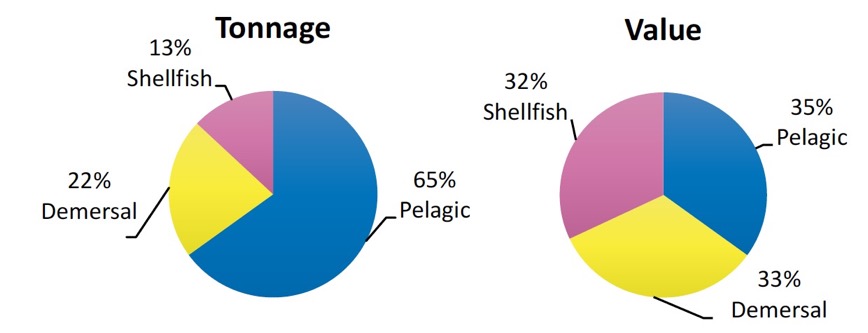
In 2017, demersal species represented 22 per cent of the tonnage of all landings (102 thousand tonnes) and 33 per cent of the value (£184 million). Pelagic species represented 65 per cent by tonnage (301 thousand tonnes) and 35 per cent of value (£197 million). Shellfish landings accounted for 13 per cent of tonnage (62 thousand tonnes) and 32 per cent by value (£180 million). This highlights the general difference in prices: Shellfish and demersal species generally tend to attract higher prices than pelagic species.
The one per cent decrease in the real terms value of landings by Scottish vessels to £560 million between 2016 and 2017 was driven by a decrease in the value of pelagic species (Chart 4). The real terms value of pelagic landings decreased by 13 per cent from 2016 whereas shellfish landings increased 6 per cent and demersal landings 7 per cent.
Pelagic species
In 2017, the real value of mackerel fell by six per cent and tonnage fell five per cent. The real value of herring fell by 46 per cent and tonnage landed by 14 per cent since 2016. The increase in tonnage of pelagic species landed is due to a sharp increase in landings of blue whiting, likely because of a rise in the available quota for this species (28 thousand tonnes up). In 2017, 63 thousand tonnes of blue whiting worth £11 million was landed by Scottish vessels, an increase of 71 per cent in tonnage and 24 per cent in real value. This explains the modest increase in pelagic tonnage landed in spite of a reduction in total value, as blue whiting is largely caught for the low value industrial market and is not landed for human consumption, hence it attracts a lower price at market (£170 per tonne in 2017).
Chart 3. Tonnage of landings by Scottish vessels by species type 2008 to 2017
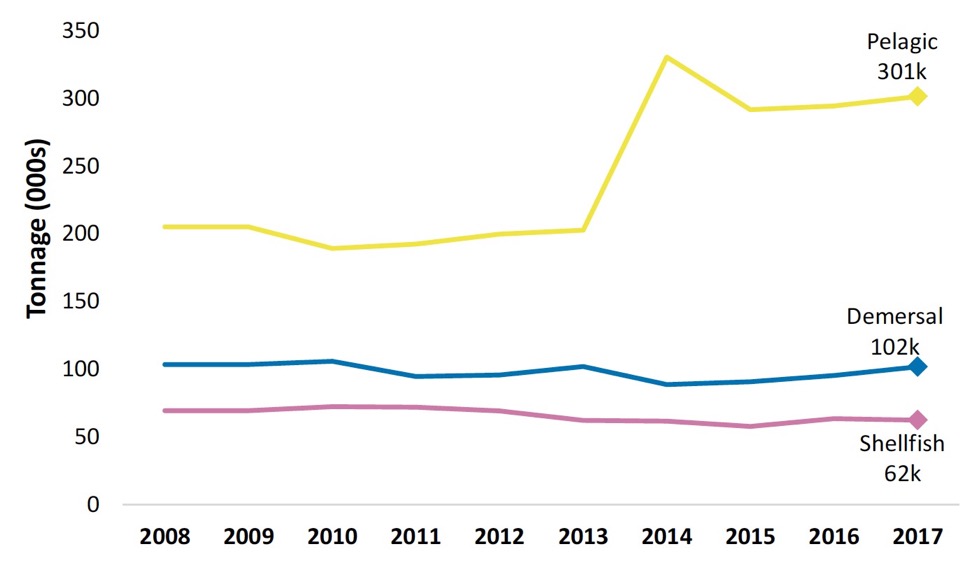
Chart 4. Real value of landings by Scottish vessels by species type 2008 to 2017
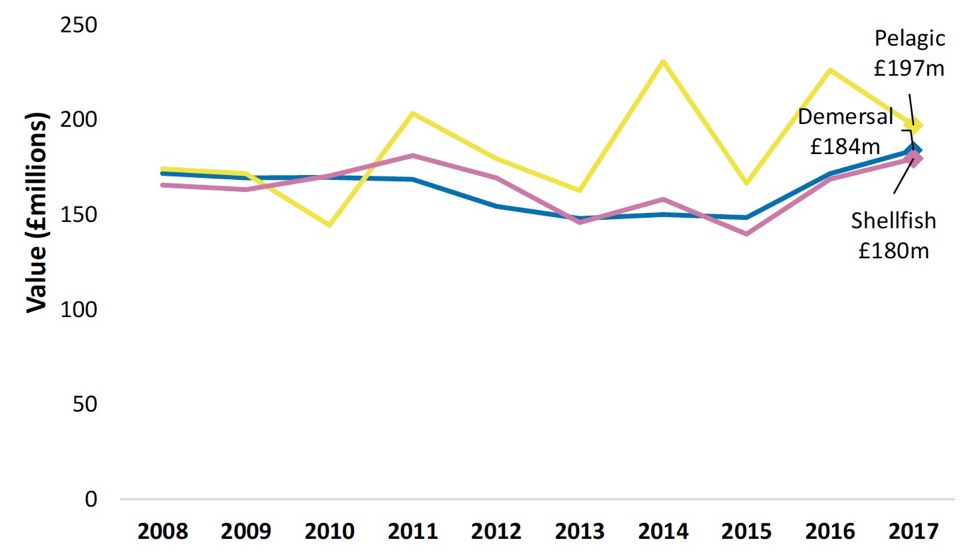
Demersal species
Most demersal species increased in real terms value with modest decreases in the value of hake and megrims. Haddock is the most valuable demersal species and represented eight per cent of the total value of Scottish landings and 23 per cent of the value of demersal landings in 2017. Monkfish accounted for six per cent of the total value of Scottish landings and 20 per cent of the value of demersal landings in 2017. Cod accounted for six per cent of the value of Scottish landings and 19 per cent of demersal landings in 2017.
Shellfish species
Crabs and lobsters make up a small proportion of overall value landed by Scottish vessels but are important for Scotland’s large inshore fleet. Tonnage of edible crabs increased from 2016 by three per cent to 11 thousand tonnes and the value in real terms increased by 27 per cent to £20 million. Tonnage of lobsters increased by six per cent to 1.2 thousand tonnes and the value in real terms increased by 23 per cent to £17 million. This reflects the high prices for shellfish, with the prices of crabs rising by 22 per cent and lobsters by 16 per cent in real terms from 2016 to 2017.
The 2017 price per tonne for each species is presented in Table 23 for the period 2013 to 2017.
Chart 5. Real terms price per tonne for key species (value of £20 million or over landed by Scottish vessels) 2016 and 2017
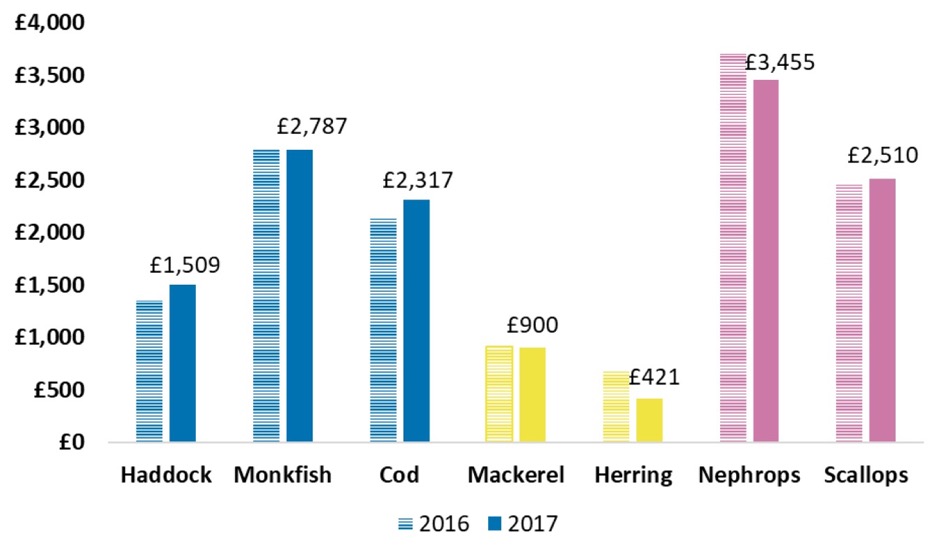
Chart 6. Trend in tonnage landed by Scottish vessels 2008 to 2017
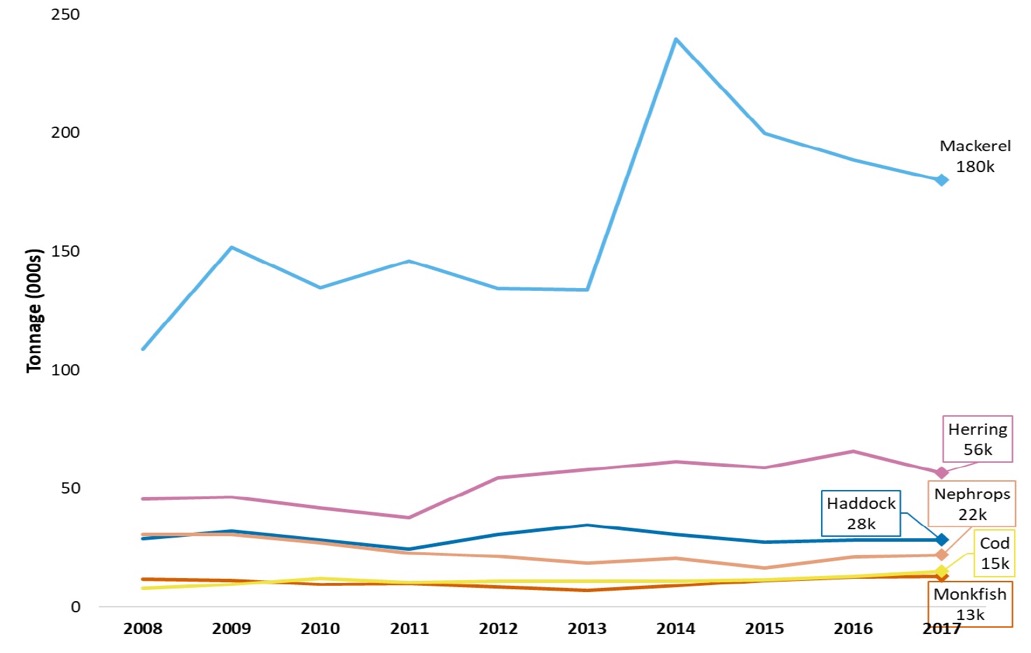
Chart 7. Trend in real value (in 2017 prices) of key species with a value of £20 million or over landed by Scottish vessels 2008 to 2017
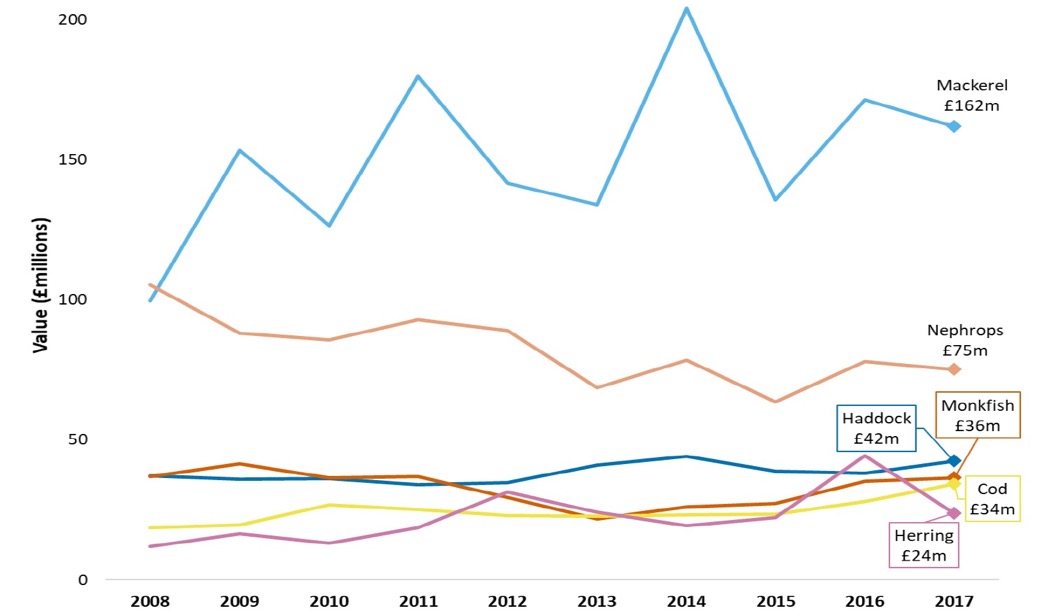
3.2. Landings abroad by Scottish vessels
In 2017, Scottish vessels landed abroad 180 thousand tonnes of sea fish and shellfish, worth £121 million. The tonnage landed abroad increased by 12 per cent and the real terms value of landings abroad decreased by 11 per cent in since 2016 (Table 4). Norway is by far the largest destination for Scottish vessels landing abroad, accounting for 62 per cent by tonnage and 74 per cent by value of all Scottish vessels’ landings abroad. Landings into Norway were comparable to 2016 by tonnage (less than one per cent change) and the value of these landings have fallen by eight per cent (Table 25).
Landings abroad accounted for 39 per cent of all landings by Scottish vessels in terms of tonnage and 22 per cent in terms of value. Of this, 93 per cent of the tonnage landed abroad was pelagic, six per cent was demersal and less than one per cent was shellfish. The main species landed abroad was mackerel, and with a value of £70 million, this represents 53 per cent of the total value of fish landed abroad in 2017. Since 2016, mackerel landings abroad have increased in tonnage by three per cent and decreased in real terms value by three per cent. There were 95 thousand tonnes of mackerel landed abroad, which is 53 per cent of the total tonnage of mackerel landed by Scottish vessels. The price for mackerel landed into the UK in 2017 was, on average, £906 per tonne, while mackerel landed abroad received an average of £893 per tonne. This is a reversal of the previous trend that mackerel prices were higher abroad than in the UK.
Nearly all of Scottish landings into Norway were of pelagic species. In 2017, 90 per cent of the value of landings into Norway was for mackerel, amounting to 90 thousand tonnes with a value of £80 million. Key countries for demersal landings were the Netherlands and Denmark. Scottish vessels landed 12 thousand tonnes of demersal species abroad with a value of £15 million. Only 850 tonnes of shellfish were landed abroad by Scottish vessels in 2017, mainly into Ireland and the Netherlands.
Chart 8. Percentage of tonnage (L) and value (R) landed abroad by Scottish vessels by species type in 2017
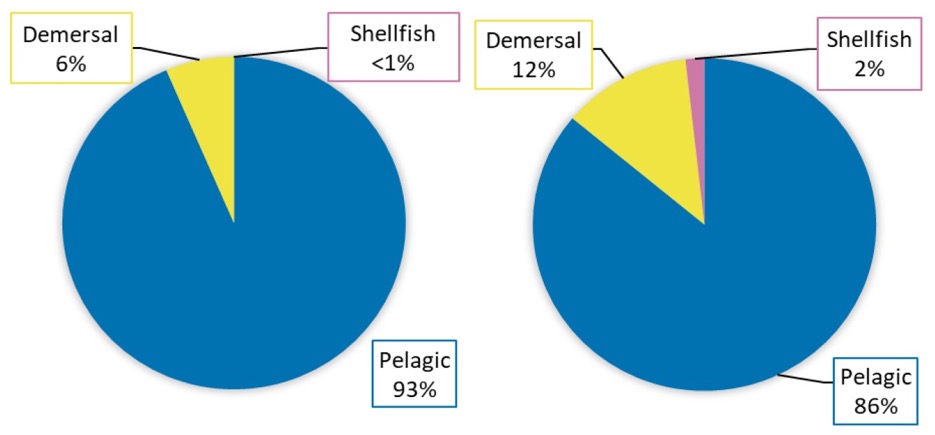
Figure 2. Tonnage landed abroad by Scottish vessels by country of landing and species type
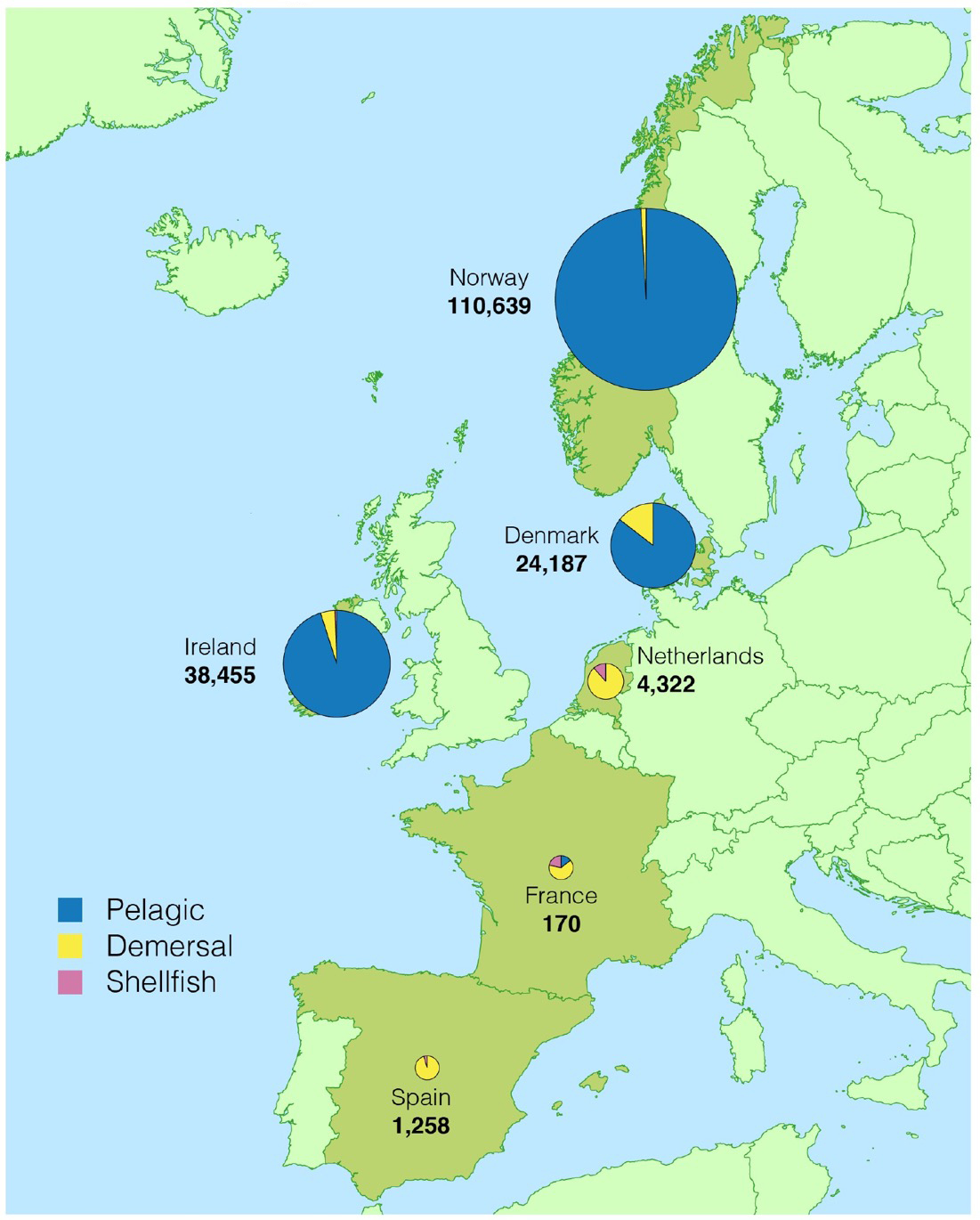
Figure 3. Value of landings abroad by Scottish vessels by country of landing and species type (£’ thousands)
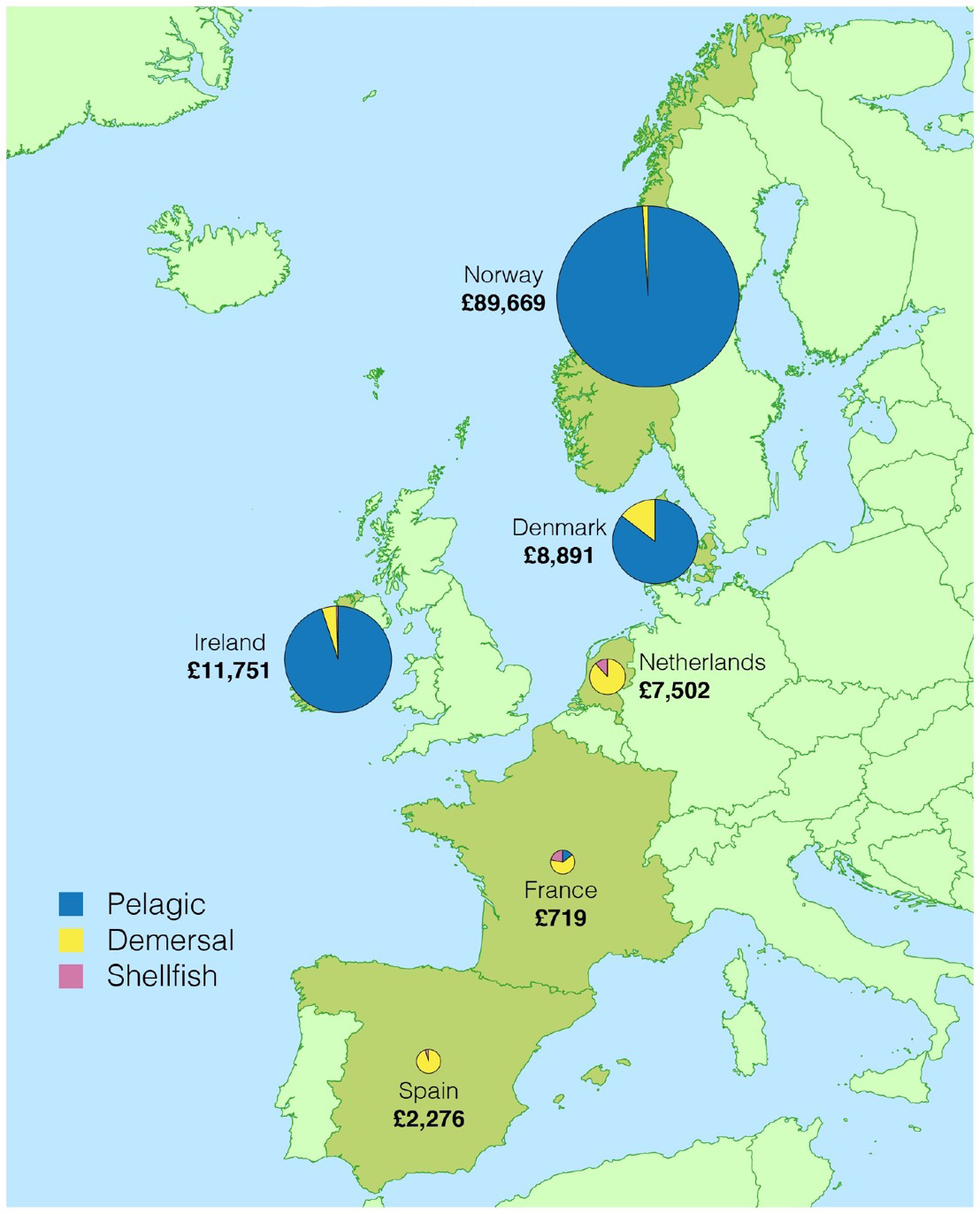
3.3. Landings by area of capture
Scottish vessels are most active in two main ICES Rectangles : the Northern North Sea (ICES division IVa) and the West Coast of Scotland (ICES division VIa) (Figure 2 and Figure 3). In the Northern North Sea (IVa), 215 thousand tonnes of sea fish and shellfish were caught with a value of £275 million, representing 46 per cent of the tonnage and 49 per cent of the value of all landings by Scottish vessels (Table 28). Almost two fifths (38 per cent) of landings by Scottish vessels by tonnage were caught in the West Coast of Scotland (VIa), providing one third (33 per cent) of the total value of all Scottish landings. The rest of Area VII (i.e. not the Irish Sea) accounted for three per cent activity from demersal and less than one per cent of the pelagic and shellfish tonnage. One per cent of the tonnage of all landings was caught in this area.
By species type, 69 per cent of the tonnage of all demersal landings by Scottish vessels was caught in the Northern North Sea (IVa), and only 13% in the West Coast of Scotland (VIa). For pelagic landings, 43 per cent by tonnage were caught in the Northern North Sea (IVa) and 47 per cent were caught in the West Coast of Scotland (VIa).
More tonnage of shellfish species was caught in the West Coast than in the Northern North Sea. The Central North Sea (ICES division IVb) and the Irish Sea (VIIa) are also areas of considerable activity for shellfish fisheries. By tonnage, shellfish catches from the West of Scotland accounted for 34 per cent of all shellfish landings and 27 per cent of shellfish landings were caught in the Northern North Sea (IVa). 19 per cent of shellfish catches are from the Central North Sea (IVb) and eight per cent are from the Irish Sea (VIIa), where almost all catches from the Irish Sea are of shellfish species.
Further data on fishing activity in the seas around the UK by Scottish vessels, other UK vessels and foreign vessels that land into the UK are available on the ICES rectangle webpage on the Scottish Sea Fisheries Statistics website (see Annex 3 page 38). These data show the tonnage and value of landings by species type and fishing effort by ICES rectangle. Maps on fishing activity in Scottish waters by Scottish vessels, other UK vessels, and foreign vessels that land into the UK will be available on the National Marine Plan Interactive (NMPi) webpage.
Figure 4. Tonnage landed by Scottish vessels by area of capture and species type
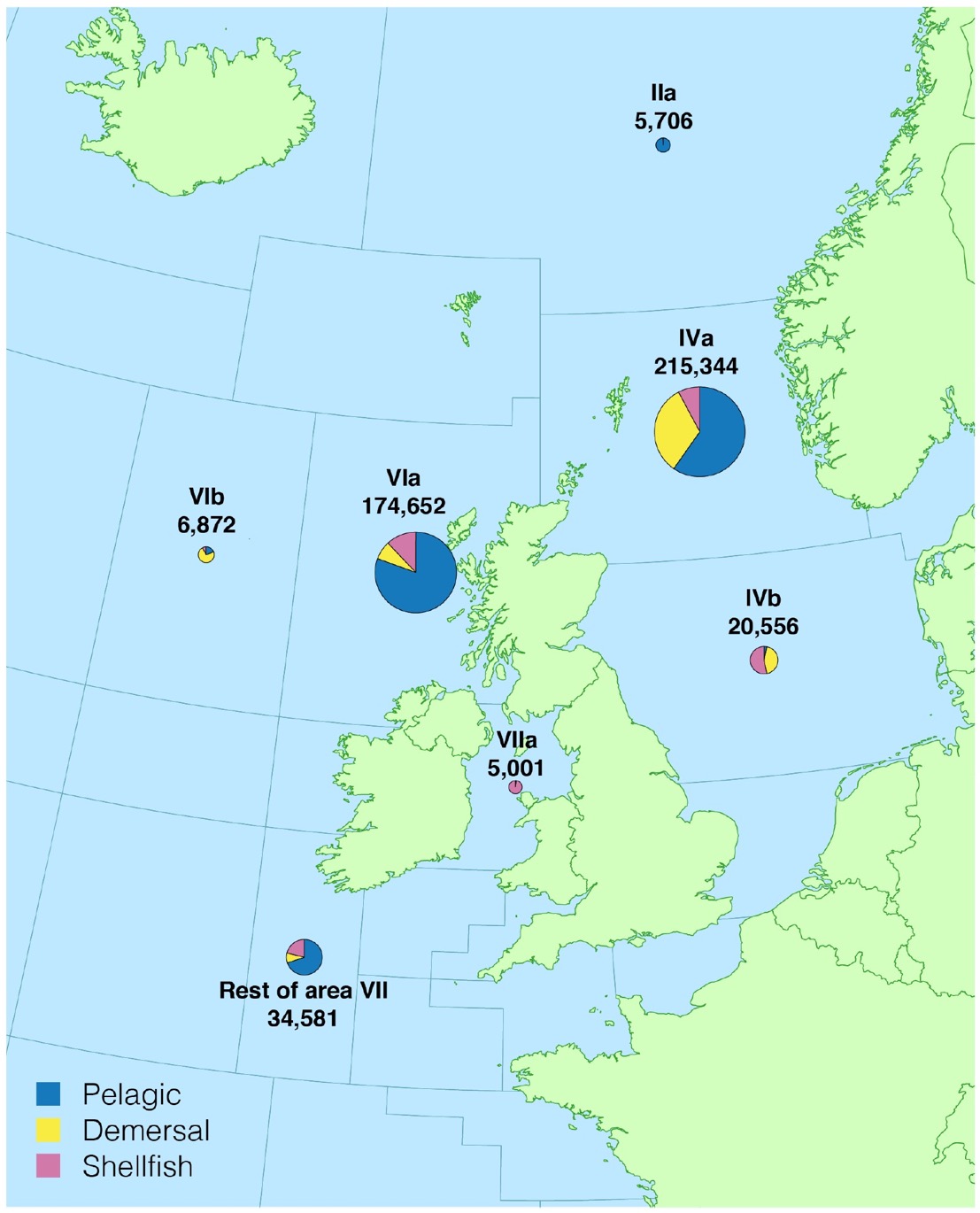
Figure 5. Value of landings by Scottish vessels by area of capture and species type, (£’thousands)
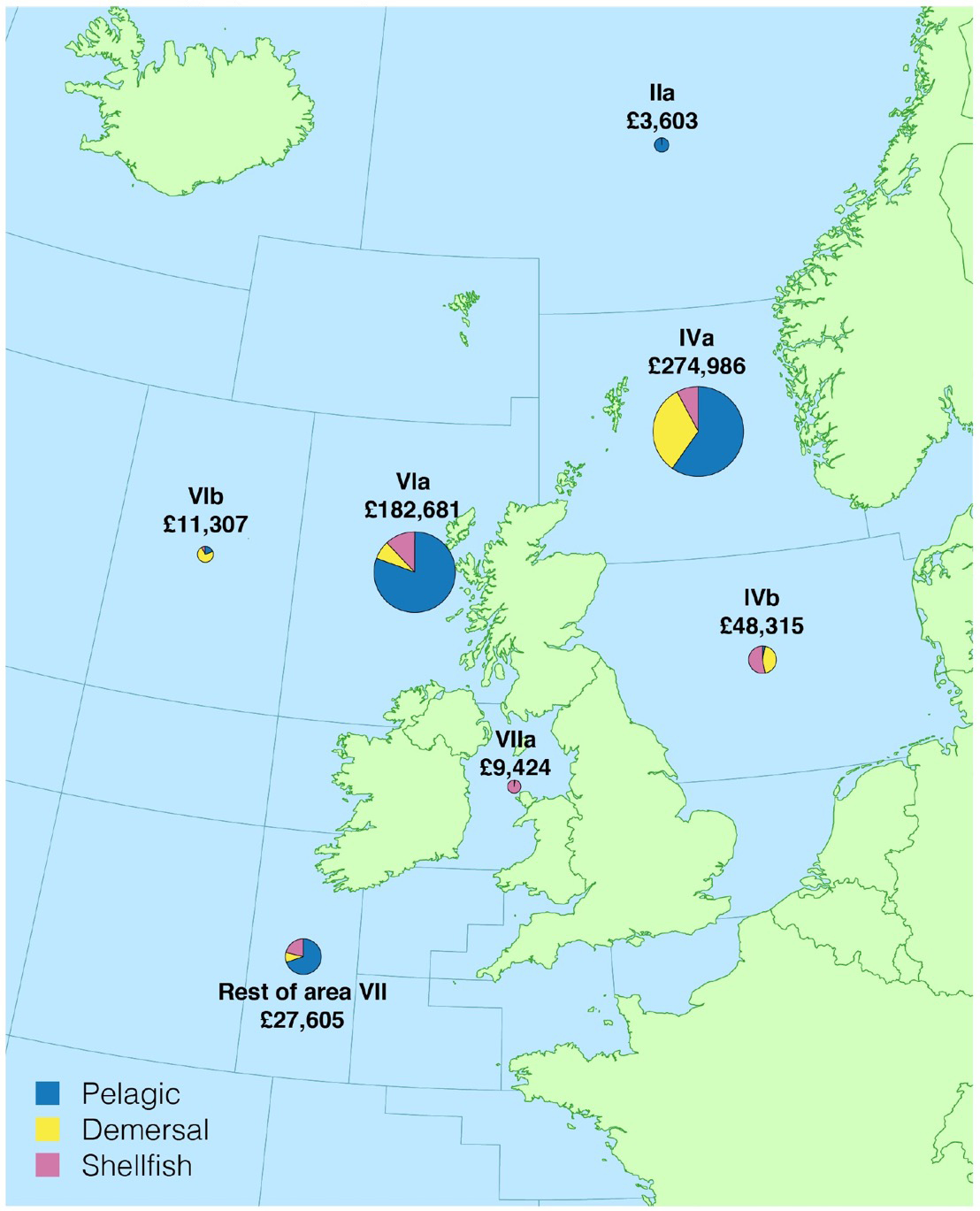
3.4. All landings into Scotland
In 2017, there were 341 thousand tonnes of sea fish and shellfish landed into Scotland with a value of £505 million. This represents a two per cent decrease in both tonnage and in real value since 2016. Landings of demersal species accounted for 40 per cent, pelagic species - 45 per cent and shellfish species - 15 per cent of the total tonnage landed into Scotland. By value, 48 per cent of landings into Scotland were demersal, 21 per cent were pelagic and 31 per cent were shellfish species. The differences in shares by tonnage and value reflect the differences in average prices per tonne across the species types: shellfish sell at relatively higher average prices per tonne, whilst pelagic species receive the lowest average prices per tonne (Table 23).
Figure 6 and Figure 7 show landings by all vessels by species type into the eighteen Scottish port districts (also in Table 29). Landings into the south-west coast and south-east coast were dominated by shellfish, while landings into the north-west coast were mostly demersal and the north-east coast were mostly pelagic landings. The three largest districts in Scotland in terms of total tonnage landed were Peterhead (east coast), Shetland (north) and Fraserburgh (east coast). Peterhead is the single largest fishing port in the UK by tonnage and value landed there.
Combined, the top three districts on tonnage accounted for 74 per cent of total weight landed and 60 per cent of value of all landings into Scotland. Peterhead had 163 thousand tonnes landed in 2017 with a value of £179 million. This represents a two per cent increase in tonnage and a one per cent increase in real terms value. By tonnage, 61 per cent of the landings into Peterhead comprised pelagic species and these accounted for 37 per cent of the landings value into the district. In contrast, 36 per cent of the tonnage landed into Peterhead was demersal species that accounted for 54 per cent of the value.
Landings into Shetland totalled 63 thousand tonnes (down 12 per cent) and were valued at £77 million (down four per cent). As with Peterhead, the majority of landings into Shetland were of pelagic species, which represented 63 per cent of the total tonnage landed and 39 per cent of the total value of landings. Demersal species accounted for one third (33 per cent) of the tonnage landed and 53 per cent of the value landed into Shetland.
Landings into Fraserburgh totalled 27 thousand tonnes worth £48 million. The largest landings were pelagic species, which represented 42 per cent of the tonnage landed and 20 per cent of the total value of landings. Demersal species accounted for one third of the tonnage and 32 per cent of the value landed into Fraserburgh, whereas shellfish species accounted for 25 per cent of the tonnage and 47 per cent of the value.
Most of the West and North coast (including Orkney and Shetland) districts reported a decrease in tonnage and value of landings in 2017. Kinlochbervie reported a three per cent decrease in tonnage but a two per cent increase in value. Ullapool reported a 12 per cent increase in tonnage but a 13 per cent decrease in value.
Figure 6. Tonnage landed into Scotland by all vessels by district and species type, 2017
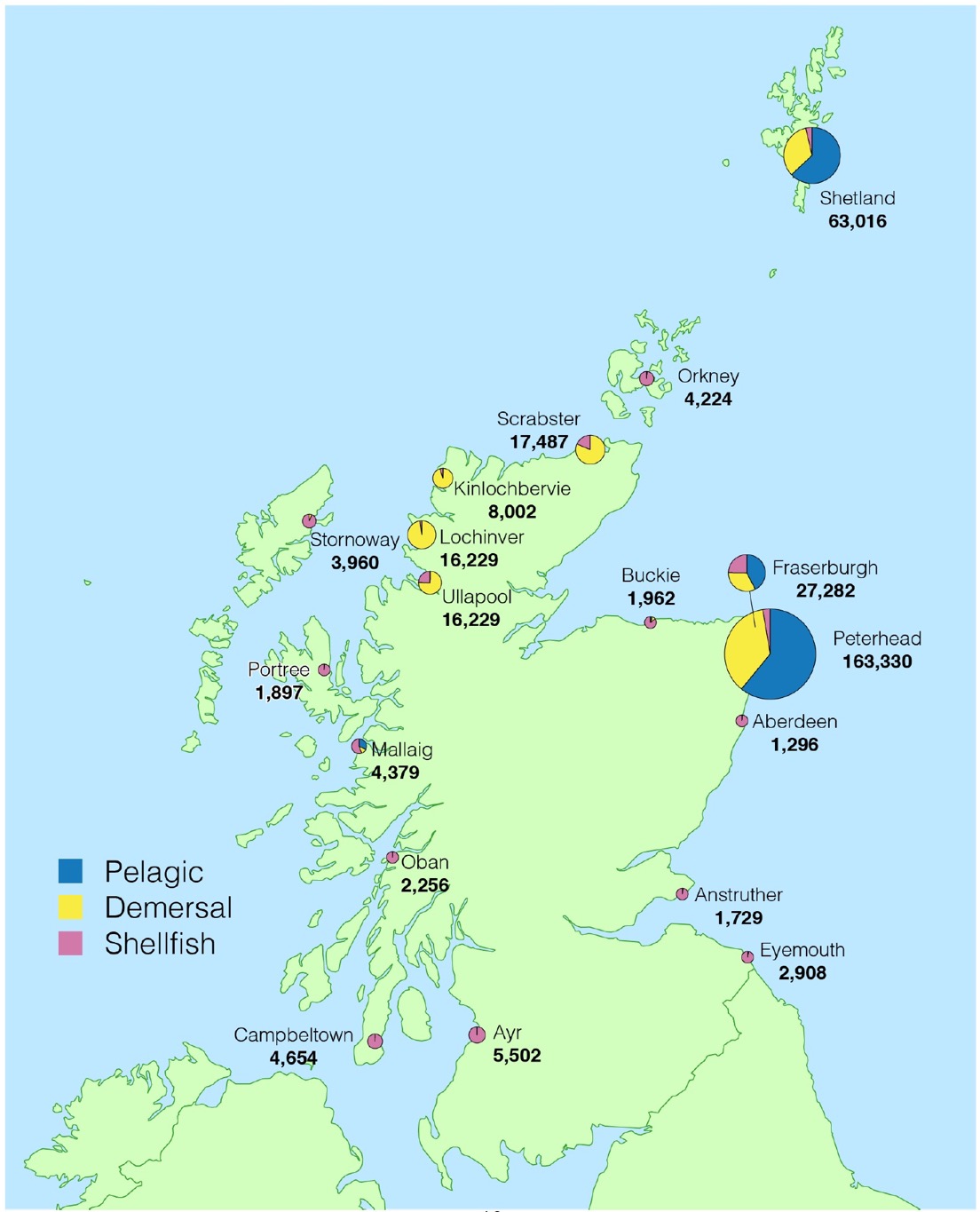
Figure 7. Value of landings into Scotland by all vessels by district by species type (£’thousands), 2017
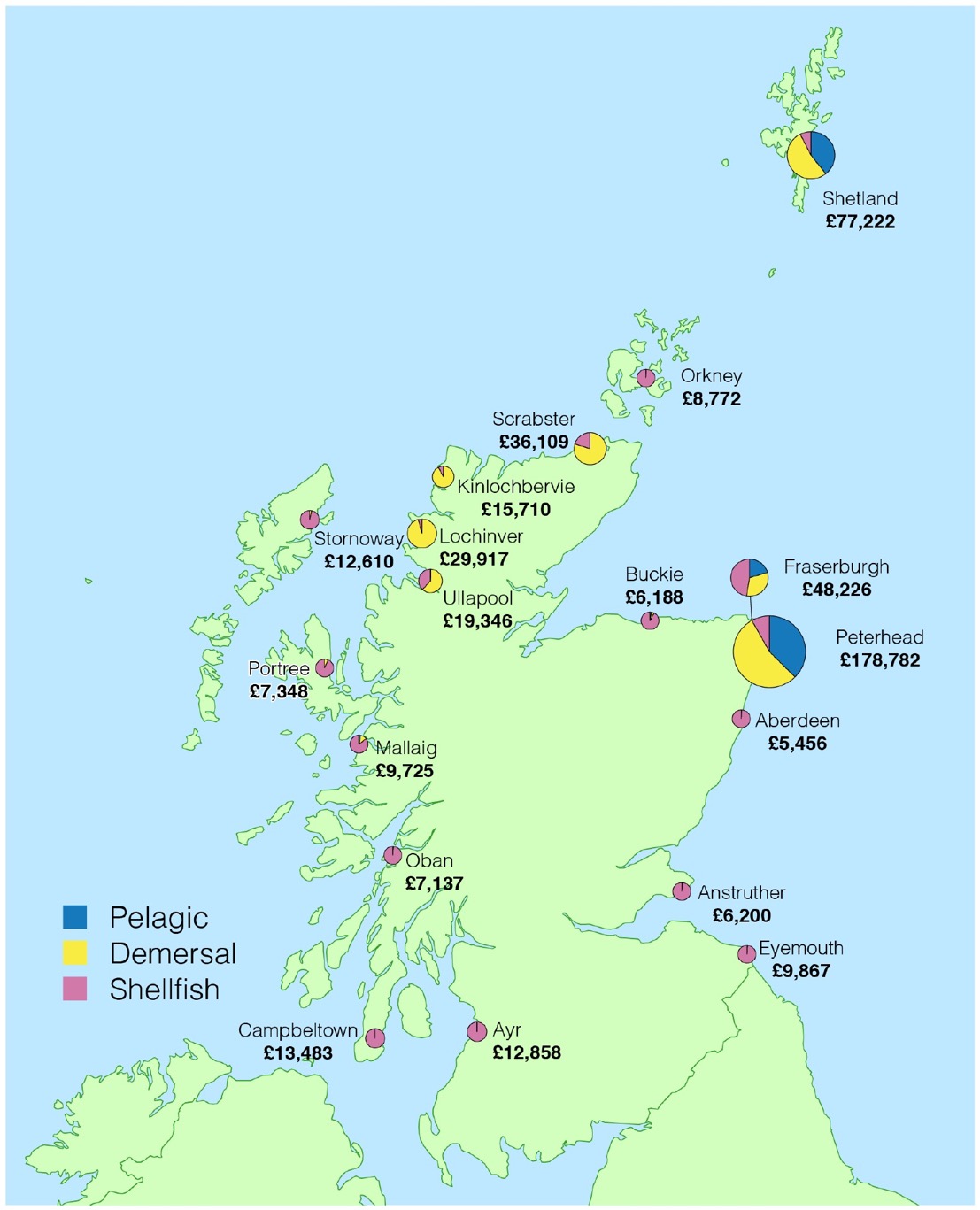
3.5. Total Allowable Catches (TAC) quota and uptake
Total Allowable Catches are limits set at international negotiations for individual fish stocks on an annual basis and represent that maximum of each stock that can be caught. Some stocks are managed and fished only by European Union (EU) member states. The TACs for these stocks are set by the European Commission through internal negotiations between EU member states with an interest. Other stocks are managed and shared with non-EU states, and TACs for these are set at separate negotiations with interested parties, particularly Norway, Iceland, the Faroe Islands and the Russian Federation (the ‘Coastal States’). The EU TAC is shared among EU member states based on a number of factors, including each member state’s past catch record. The amounts Table 33 at the UK and at the Scottish Producers Organisations’ (POs) level. Uptake of key commercial quota stocks by tonnage and value landed are presented in Table 34.
Chart 9 compares the quota uptake of key quota stocks (with landings by Scottish vessels in excess of £20 million) for Scottish Producer Organisations (POs) over the last five years in the North Sea and West Coast. In general, Scottish POs had high quota uptake in 2017 for key demersal and pelagic species. Only one stock exceeded quota: West of Scotland mackerel at 101 per cent of quota allocation.[2]
For demersal stocks, uptake in the North Sea was generally high, close to 90 per cent across the top demersal species. Uptake of plaice, sole and megrim was lower (21 – 55%). In the West Coast, demersal uptake was slightly lower for each species than the North Sea with 70-80 per cent uptake across the top demersal species. Of the three haddock stocks, two out of three reached 90 per cent uptake, monkfish uptake reached 90 per cent and North Sea cod quota uptake was at 99 per cent.
Pelagic species have consistently high quota uptake for both the West Coast and North Sea. This is likely due to the fact that pelagic species shoal together, making it easier for fishers to target particular species. Mackerel quota uptake was 101 per cent for the West Coast and just under 100 per cent for the North Sea. This is seven percentage points down on 2016 for the West Coast and one percentage point down for the North Sea, bringing this stock in line with available quota. For herring, both West Coast and North Sea uptake was just under 100 per cent.
The only shellfish species subject to quota is Nephrops. In 2017, Scottish PO quota uptake for North Sea Nephrops was 87 per cent, and for West Coast Nephrops it was 71 per cent. This represents three percentage points up compared to 2016 for the North Sea and 18 percentage points down for the West Coast.
Chart 9. Percentage quota uptakes of key commercial stocks by vessels in Scottish Producer Organisations in 2017
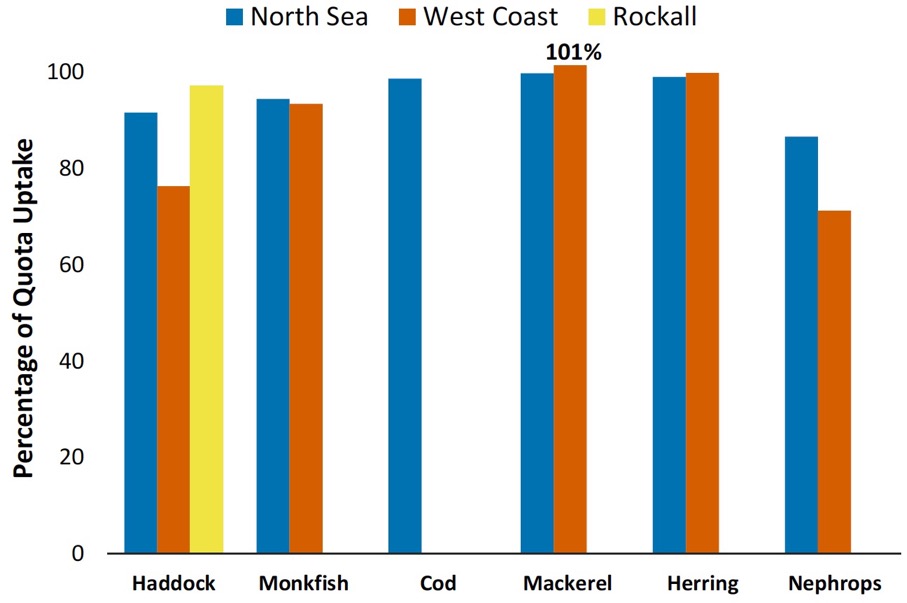
Contact
There is a problem
Thanks for your feedback